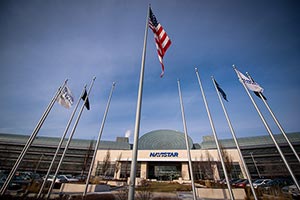Navistar Reports First Profit in Three Years

Navistar International Corp., the parent company of the International truck brand, said it turned its first profit in three years as second quarter 2016 net income reached $4 million, or five cents per diluted share.
That compares with a net loss of $64 million, or 78 cents, in the year-earlier period, it said.
The company said revenues in the quarter ending April 30 were $2.2 billion, down 18% compared with $2.7 billion in the second quarter last year.
“For the first time since we launched our turnaround more than three years ago, Navistar reported a quarterly profit,” Troy Clarke, Navistar CEO said in a statement. “Our performance this quarter begins to demonstrate the earnings potential of this company. The fact that we earned a profit despite lower Class 8 truck volumes that impacted the entire industry, underscores the tremendous progress we continue to make in managing our costs effectively and improving our operations.”
Two of the company’s four main business units saw income rise in the quarter: the parts segment increased to $176 million — a quarterly record — from $133 million a year earlier, while the financing unit’s income rose to $25 million, up from $22 million in the year-earlier period, it said.
The truck unit had a loss of $23 million compared with a loss of $51 million a year earlier, and global operations reported a loss of $1 million, compared with $1 million in profit in the same period one year ago, it said.
For the second half of 2016, Navistar said it lowered its industry guidance range by 20,000 units, due to softening Class 8 market conditions.
“While we were net income positive in the second quarter, it will now be difficult for us to be profitable for the entire year given the tougher than anticipated market conditions, primarily due to the lower outlook for Class 8 industry volumes,” Clarke said. “We are confident we will generate and implement additional performance improvements to partially offset current industry conditions.”




